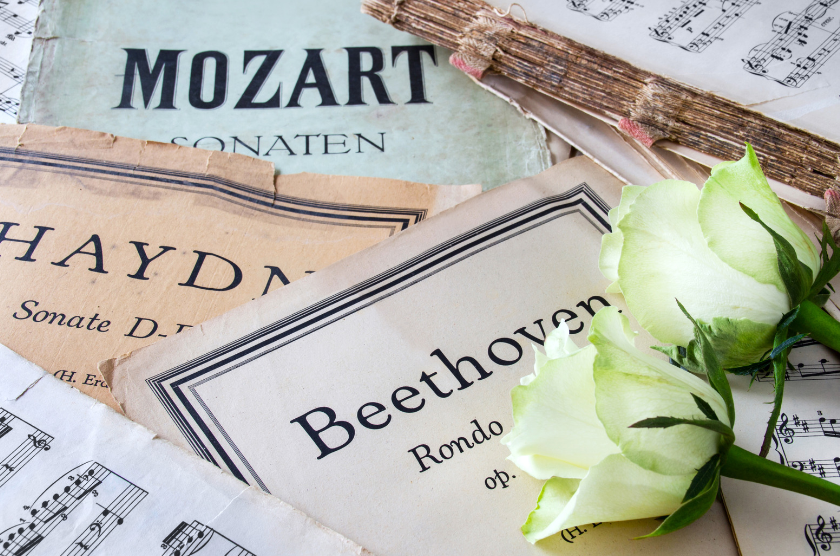The origins of classical music have been integral parts of every Eastern and Western culture. It has existed much longer than when we first began recording it and playing it on stages; it’s something that is an integral part of our culture and society. Today, we’ll discuss the origins of classical compositions and classical music history, a timeless genre.
Classical music history is extensive and goes back a long way. It has its roots in the music of ancient cultures when ancient classical instruments like flutes, lyres, and drums resounded throughout wide-open spaces. Early classical music like this served as a link between the human and the divine and was frequently played during religious ceremonies.
Classical music’s evolution has changed greatly over the centuries, adding to the classical music timeline. Different classical music periods contributed a great deal to the origins of classical music.
The beginnings of classical music can be traced back to the Medieval period. Western European music from the years following the fall of the Western Roman Empire in 476 until around 1400 is categorized as medieval music. After the fall of the Roman Empire, a long time ago in Europe, came the era of medieval music. Before beginning to sing more complex melodies with multiple voices, people used to sing basic tunes by themselves. Christian monks invented a system for notating music so that everyone could sing in unison. Additionally, they created tunes that blended the sounds of several voices. Back then, instruments like fiddles, lutes, and flutes were common. Medieval music influences include Guillaume de Machaut and Hildegard of Bingen.
Classical music development took new turns during the Renaissance. Renaissance music’s origins can be traced between 1400 and 1600. It was a period of transformation and renewal. For music, art, and science, it was a unique and progressive period. Polyphony—the simultaneous use of many sounds—grew in significance in the world of music during this golden era. Musicians started to experiment more around this time. They experimented with various musical genres. Additionally, more instrumental music could be played thanks to better instruments. The first time a press was used to print music was in the fifteenth century. Previously, music had to be copied or written by hand. The ability to print music allowed ideas to travel farther and faster.
Baroque music’s origins also played a constructive role in classical music history. Instead of utilizing the major and minor keys we are accustomed to today, modes were used to organize music throughout the Renaissance. Composers started adding extra sharps or flats that didn’t suit the original modes. This was the beginning of the tonal system, an innovative approach to music that became popular over time, especially in the Baroque period. The traditional modes grew less recognizable as more pieces began to use these extra sharps and flats. Only the Ionian and Aeolian modes eventually continued to be popular. The terms “major” and “minor” now refer to these modes. The key system we currently use was shaped by this evolution during the Baroque era.
Other music styles that contributed to classical music’s evolution are the romantic style, modernist style, postmodern style, and contemporary classical style. Classical music pioneers like Johann Sebastian Bach, Wolfgang Amadeus Mozart, and Ludwig van Beethoven laid the foundations of this timeless genre!


